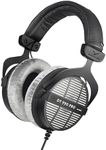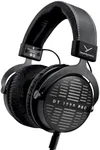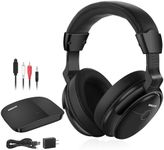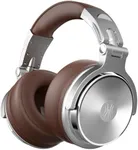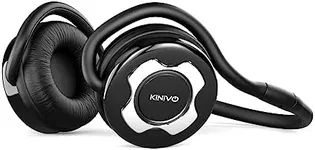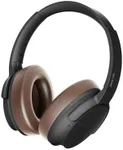Buying Guide for the Best Open Back Headphones
Choosing the right open-back headphones can significantly enhance your listening experience. Open-back headphones are designed to allow air and sound to pass through the ear cups, creating a more natural and spacious sound. When selecting the best pair for you, consider your listening environment, preferences, and the specific features that will meet your needs. Here are some key specifications to consider and how to navigate them.Sound QualitySound quality is the overall audio performance of the headphones. It includes clarity, detail, and balance across different frequencies (bass, midrange, and treble). High-quality sound is important for an immersive listening experience. To navigate sound quality, consider headphones with a wide frequency response range (e.g., 20Hz to 20kHz) and read reviews to understand how they perform in real-world scenarios. If you enjoy detailed and accurate sound, look for headphones known for their high fidelity.
ComfortComfort refers to how the headphones feel when worn for extended periods. This is crucial for long listening sessions. Comfort can be influenced by the weight of the headphones, the padding on the ear cups, and the headband design. Lightweight headphones with plush padding and adjustable headbands are generally more comfortable. If you plan to use the headphones for hours at a time, prioritize models that are known for their comfort.
Build QualityBuild quality is the construction and durability of the headphones. High build quality ensures that the headphones will last longer and withstand regular use. Look for headphones made from sturdy materials like metal and high-grade plastic, and check for features like reinforced cables and robust connectors. If you need headphones that can handle daily wear and tear, opt for models with a reputation for durability.
ImpedanceImpedance is the resistance of the headphones to the electrical signal from the audio source. It affects how much power is needed to drive the headphones. Low impedance headphones (below 50 ohms) are easier to drive and can be used with portable devices like smartphones. High impedance headphones (above 50 ohms) often require an amplifier for optimal performance. If you plan to use your headphones with a variety of devices, consider the impedance to ensure compatibility.
Frequency ResponseFrequency response is the range of frequencies that the headphones can reproduce. It is usually measured in Hertz (Hz) and indicates how well the headphones can handle low, mid, and high frequencies. A wider frequency response range (e.g., 20Hz to 20kHz) generally means better sound reproduction. If you enjoy a full spectrum of sound, look for headphones with a broad frequency response.
SoundstageSoundstage refers to the perceived spatial location of sound sources. Open-back headphones typically offer a wider and more natural soundstage compared to closed-back models. This creates a sense of space and depth in the music. If you value a realistic and immersive listening experience, prioritize headphones with a reputation for an expansive soundstage.
ConnectivityConnectivity refers to how the headphones connect to your audio source. Most open-back headphones use a wired connection, but some models may offer wireless options. Wired connections generally provide better sound quality and reliability. If you prefer the convenience of wireless, ensure the headphones have good battery life and stable connectivity. Choose the type of connectivity that best suits your usage habits.
